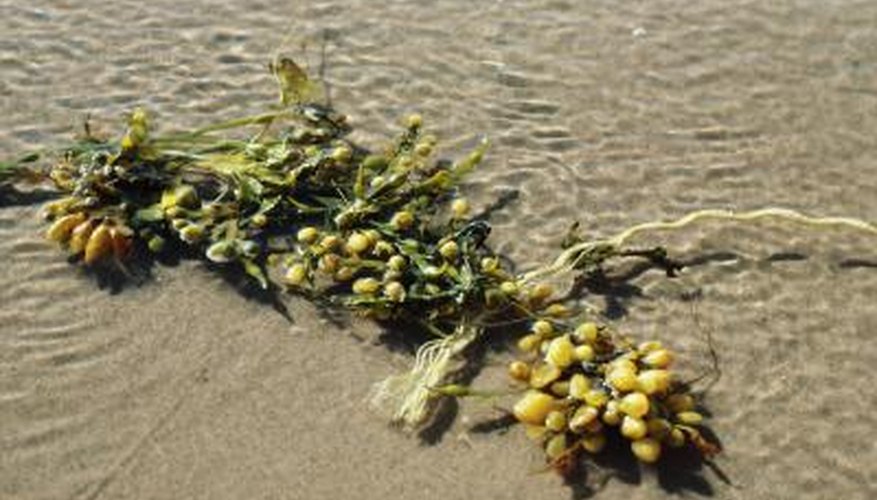There are 10,000 recognised varieties of seaweed in the world. Seaweed is typically classified as marine algae rather than plants, although they share characteristics with both groups. Seaweed differs from most algae because they are larger and multicelled. Many seaweeds look like plants, but they lack the complex vascular structure of plants. Seaweed falls primarily into one of three main algae categories, based on their dominant pigmentation: green, brown and red algae.
Seaweed Characteristics and Varieties
Many seaweed varieties look similar to plants found on solid ground. Some have structures called blades, which are shaped like large straight leaves or fronds. Others have a spore cluster called a sorus, and still others have a stemlike structure called a stipe. Most have large flat surfaces to maximise exposure to the sun so they can successfully undergo photosynthesis. Others have air sacs that serve as floats to keep the plants closer to the surface to capture the sunlight. Seaweeds range in size from 1 inch to over 40 feet; one of the brown kelp varieties is larger than virtually all of the plants on earth.
- Many seaweed varieties look similar to plants found on solid ground.
- Others have air sacs that serve as floats to keep the plants closer to the surface to capture the sunlight.
Seaweed Habitats
Seaweed is found in virtually every area of the world's oceans. The seaweed attaches itself to rocky surfaces with finger-like body parts called holdfasts. Most live in shallow waters, giving them access to the sunlight needed for photosynthesis; however, in a few very clear bodies of water, they may live as far as 250 meters below the ocean's surface. An unusual marine phenomenon occurs in the Sargasso Sea, where thousands of individual sargassum seaweeds mesh together to form a vast floating mass of seaweed.
- Seaweed is found in virtually every area of the world's oceans.
- An unusual marine phenomenon occurs in the Sargasso Sea, where thousands of individual sargassum seaweeds mesh together to form a vast floating mass of seaweed.
Benefits and Uses
Experts including Michael Guiry of Ireland (The Seaweed Site) and scientists in Western Australia's Marine Parks estimate there are over 400 varieties of seaweed used throughout the world as foods, medicines or other beneficial products. Many Asian countries deliberately cultivate some forms of seaweed for human consumption, including several varieties of kelp and red algae. Some types are eaten outright, others are powdered and used as seasonings. Other species of seaweed are grown for use in fertilisers, cosmetics and skin care products, medicines and industrial chemicals.
- Experts including Michael Guiry of Ireland (The Seaweed Site) and scientists in Western Australia's Marine Parks estimate there are over 400 varieties of seaweed used throughout the world as foods, medicines or other beneficial products.
Problems Caused by Seaweed
Not all seaweeds have positive uses, and some even cause major problems. Aggressive varieties like sargassum can invade extended areas of ocean, choking out native varieties of seaweed. Invasive species may be carried on tidal currents or inadvertently spread by ships, fish nets or in fresh fish catches that go from an ocean in one part of the world to another. These unwelcome intruders can damage the local ecosystems, causing irreversible ecological damage and threatening the continued existence of some species of local marine life.
- Not all seaweeds have positive uses, and some even cause major problems.
- Aggressive varieties like sargassum can invade extended areas of ocean, choking out native varieties of seaweed.
